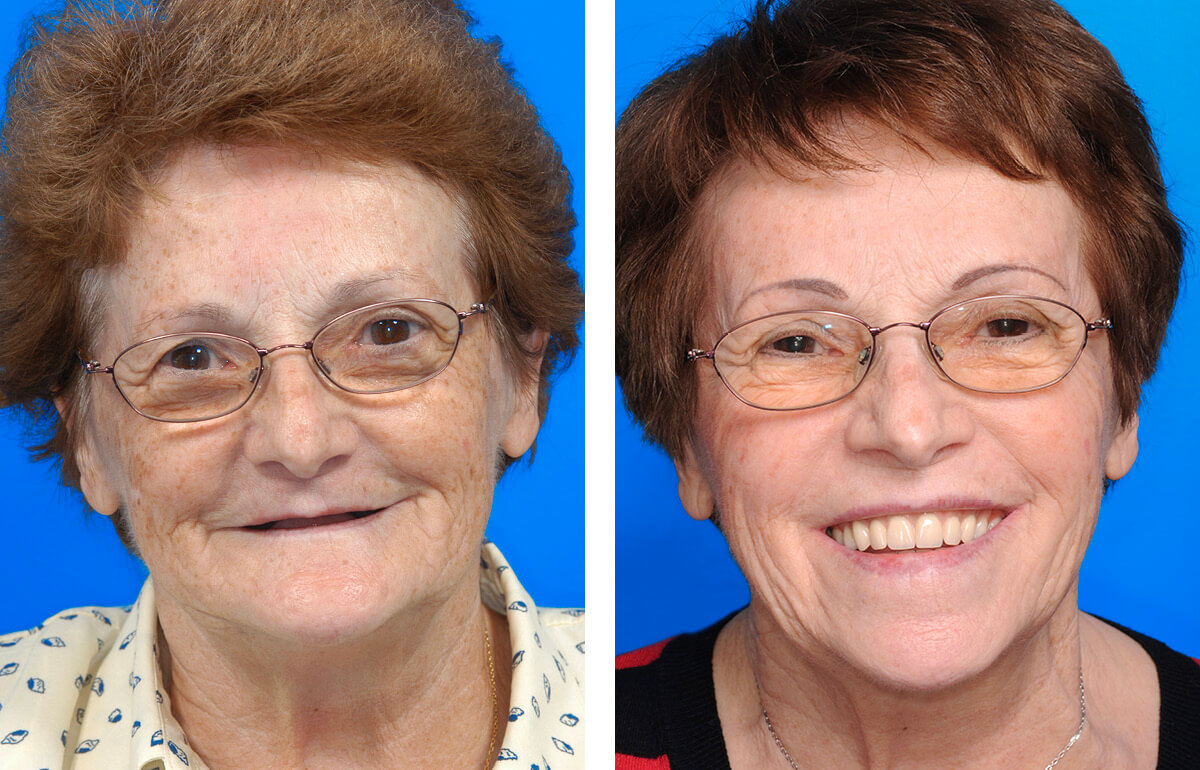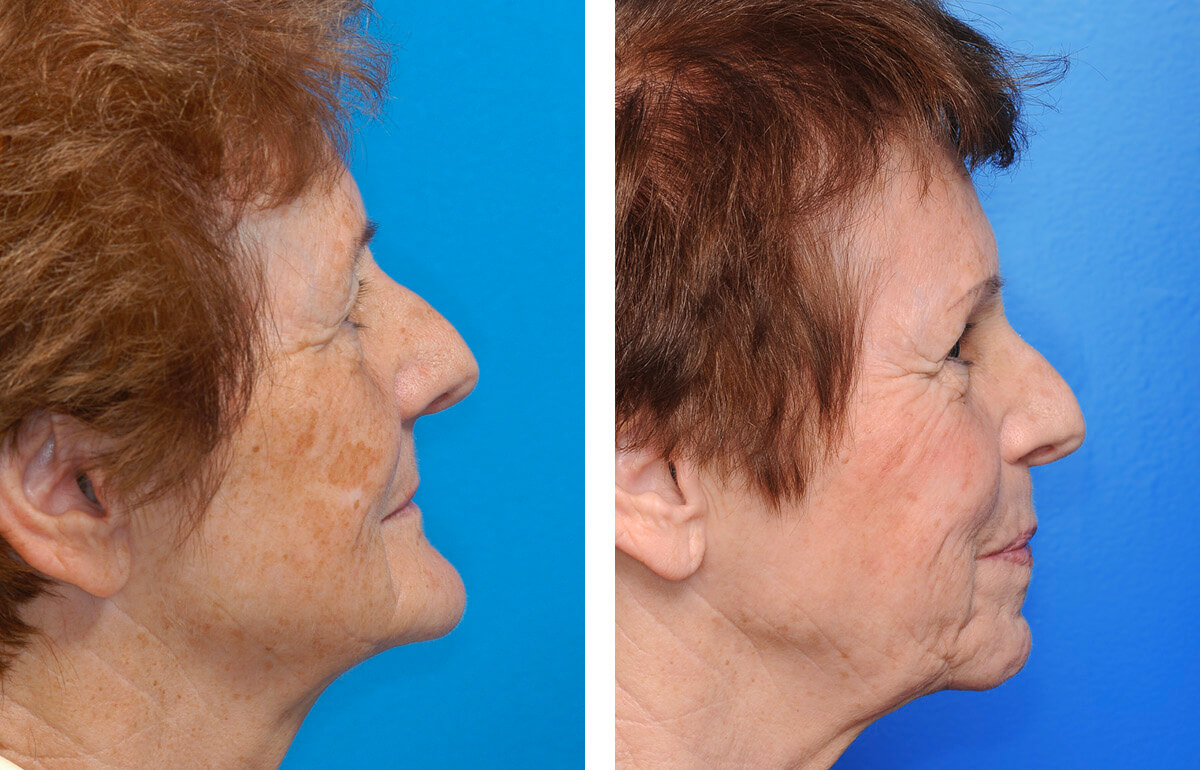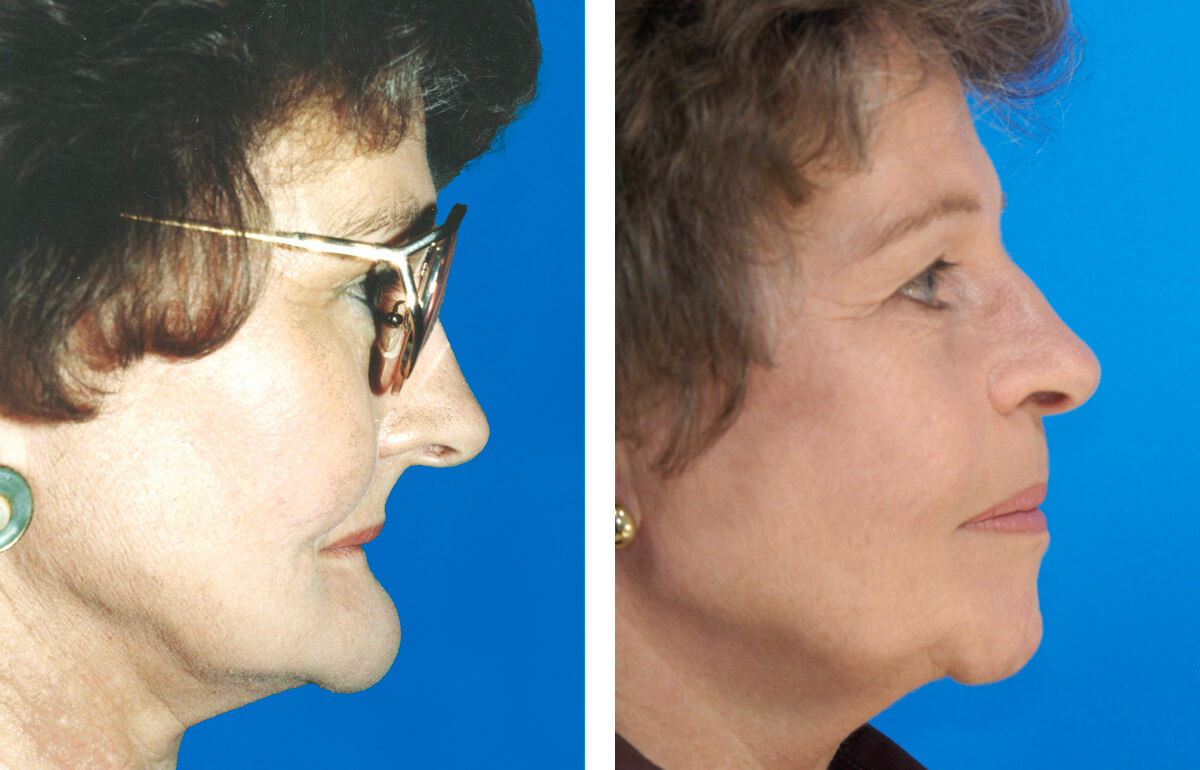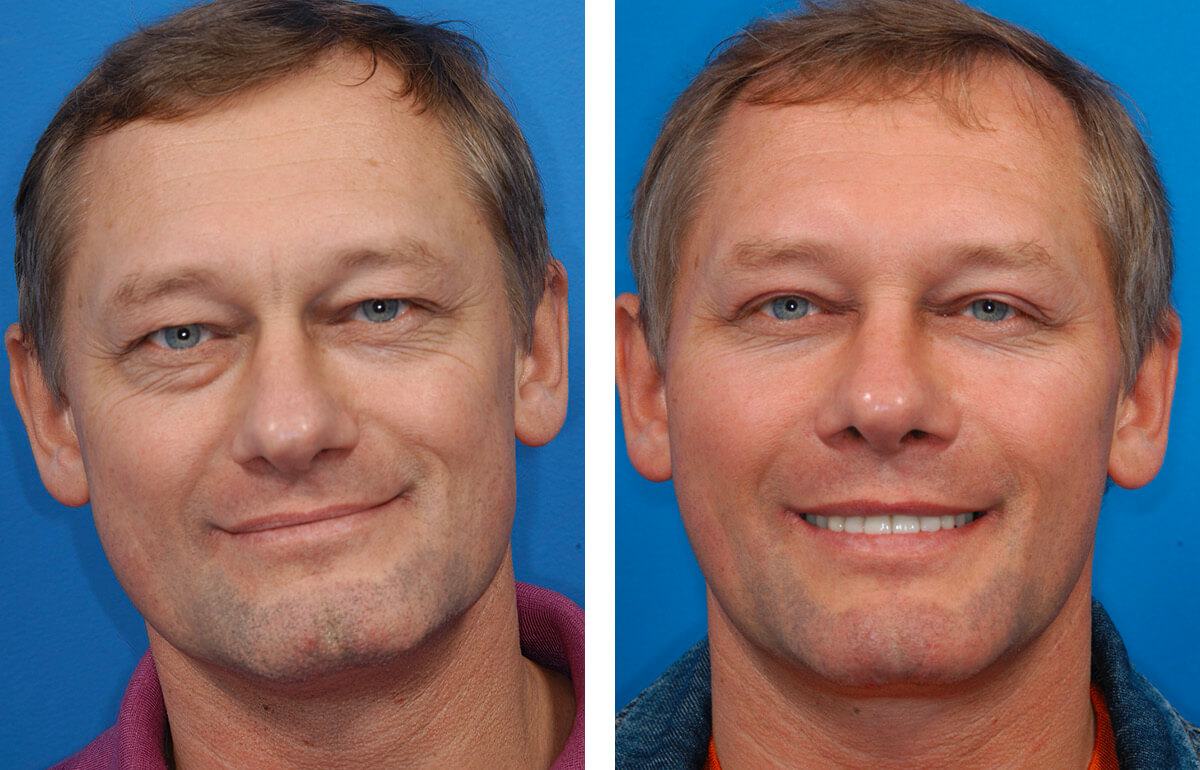
Further information (Implantology - jaw ridge enhancement)
Jaw ridge enhancement requires surgical skill and experience
For extensive ridge augmentations and sinus inlays, the patient’s own bones are mostly used, these days primarily from the iliac crest. For larger jaw enhancements however, calvarium bone is significantly superior to iliac crest. For smaller ridge augmentations and sinus inlays, the patient’s own bones can be taken from the operation area itself, e.g. from the cheekbones, chin or ascending lower jaw (Ramus), occasionally mixed with (bank) bones.
An implant can only be inserted in an area where the jaw ridge is sufficiently wide and high. For pre-implant ridge augmentation, there are various possibilities available: These include guided tissue regeneration with special membranes that maintain a cavity and prevent this being filled by connective tissue. Frequently bone which is additionally protected with a membrane is used.
Greatest security for the necessary conservation of the mucous membrane
The sinus floor elevation surgery which is often required in the upper jaw side area is an indirect ridge elevation or pseudo ridge elevation because the ridge is not actually raised, and instead bones or bone substitute materials are introduced into the maxillary sinus after careful lifting of the thin periosteum layer and mucous membrane. Professor Sailer usually deploys a piezo device, which penetrates the bones with ultrasound, for this procedure. This delicate procedure ensures great security for the necessary conservation of the maxillary sinus mucous membrane. Here it is always necessary to differentiate between a mini elevation and an extended one.
Successful deployment of bone substitute material
In the case of mini elevations and mini reconstructions across one or two tooth widths, we use bone substitute materials such as cattle bone derivatives or coral with a high success rate. Unfortunately these bone substitute materials are not bone inductive, i.e. they do not cause new bone formation. In the best cases the bone substitute materials are bone inductive, meaning that they are slowly replaced by ingrowing bone. However this is only in the sections where circulation is favourable, i.e. near the ridge and near the maxillary sinus mucous membrane, while the bone substitute material lies unchanged in the connective tissue in the intermediate sections.
Patient’s own bone grafts (antologous bone)
For extensive ridge augmentation in the case of advanced atrophy (Cawood, class IV to VI), the patient’s own bones nearly always have to be used. During the early years of pre-prosthetic surgery, the patient’s own (autologous) bones from the rib were frequently used for ridge augmentation. This technique is regarded as obsolete today, because the resorption of this bone occurs rapidly. The autologous bone material most frequently used today is the iliac crest which has a very different structure to jaw bones. Its bone marrow is reabsorbed very quickly; the corticalis significantly slower.
Bone-forming proteins
The new bone formation at the location of the implant depends on many other factors including the availability of bone-forming proteins (bone morphogenetic proteins, BMP) which are found particularly in the hard corticalis and to a lesser extent in the bone marrow. The harder a bone is, the thicker its corticalis is, and the more BMP the transplant contains, the lower the chance of resorption of the transplanted bone.
It is well known that soft osteoporotic bone can be very quickly reabsorbed in older patients, so that despite bone augmentation no implant can be inserted, because even after four to six months, the bone has already been too heavily reabsorbed.
Iliac crest with disadvantages
Whereas rib bones are practically no longer used for augmentations in the jaw area, the most common area for bone grafts to be taken from is still the iliac crest. As well as the non-precise predictability of bone resorption, the iliac crest has a particular disadvantage, namely severe pain over a long period, often occurring when a small amount of bone material is removed, around one or two centimetres.
In the case of extensive ridge reconstructions, however, bone sizes of around six times three centimetres per jaw are needed, above all when the upper jaw and the alveolar augmentation is developed in a circular way and a sinus inlay and nose inlay have to be performed.
Pelvic bone grafts lead to severe movement pain which can last weeks or months and are extremely unpleasant, particularly for patients who do a lot of sport or have to climb stairs. As well as the pain, the rate of complication at this graft site is relatively high, as can be read in scientific literature. The iliac crest should not be grafted in patients with hip or knee prosthetics.
Advantages of calvarium bone
For larger jaw enhancements however, calvarium bone is significantly superior to the iliac crest. Only the outer bone lamella is usually used. There are many advantages of this autogenous bone:
- Like the jaw bone, this bone is of what is known as membranous origin, in contrast to all other bone material outside the cranial area which is formed via a cartilaginous intermediate stage and must first adapt itself to the local jaw bone.
- Calvarium bone is extremely hard and made almost purely of corticalis, meaning that it degrades only very slowly. There is hardly any resorption in the case of transplantation after four to six months. In the case of delayed insertion of implants, a transplant is still possible ten to twelve months afterwards; this is only rarely the case with iliac crest bones.
- Another big advantage is that the patients have no pain following the procedure and can move free of pain immediately after the operation. This is particularly important for older patients who find mobilisation difficult after iliac crest grafting and are often hospitalised for a long time. If hair growth is normal, the scar is not visible.
Advantages of calvarium bone
The disadvantages in the use of calvarium bone is a fine scar which is visible in men with extensive hair loss. During the operation, hair is not removed, even the hair in the region of the incision is not removed, similar to a facelift.
In the case of larger iliac crest grafts, on the other hand, there is almost always a large, clearly visible scar and very often a deforming of the iliac crest edge which disturbs women above all (bikini wearers).
Active new bone formation
To raise and widen the jaw, calvarium bone can be layered up in several layers and fixed with mini screws made from titanium or absorbable screws on the remaining jaw. For major sinus elevation surgery in which up to half of the entire maxillary sinus is filled, the calvarium bone is broken down into chips.
We then cover the bone window in the fossa canina with a special third generation membrane which is not only resorbable and fixes itself only a few minutes after being placed, but at the same time is bone inductive, i.e. it actively encourages new bone formation. This occurs thanks to N-Methyl-2-pyrrolidon (NMP).
Animal experiments have shown that the new bone formation is even superior to that of BMP. We use the same membrane in critical load zones, e.g. where two bone transplants collide and a depression or a connective tissue infiltration could possibly occur. In the same way, we use these membranes in cases where we have removed bicortical bone for smaller augmentations in the chin region and need to anticipate complete ossification at the place of the bone graft, for example with regard to the later insertion of implants.
Proven success
From over 100 major ridge augmentations carried out to date, mostly in combination with sinus inlays, we have seen - in the second operation, the insertion of dental implants - the major resorption of calvarium bone in only one case. Notwithstanding this, the insertion of implants was not brought into question.
Calvarium bone can also be used in cases of advanced osteoporosis of the skeletal system. Calvarium bone which is of membranous origin seems to be significantly less affected by osteoporosis than the bones of the rest of the skeletal system which are derived from cartilage.
It is well-known that smoking can not only contribute to wound healing disorders on the skin and mucous membranes (dehiscences), and to the loss of bone transplants, but also to a lower healing rate for tooth implants.



